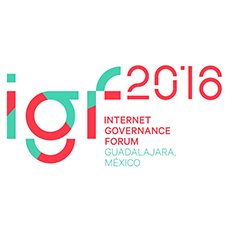An ‘internet of women’ by 2020: WSIS vision into reality
6 Dec 2016 10:30h - 12:00h
Event report
[Read more session reports and live updates from the 11th Internet Governance Forum]
The session An ‘Internet of Women’ by 2020: WSIS Vision into Reality focused on addressing the gender digital divide. Moderator Barbara Wanner, Vice President, ICT Policy, U.S. Council for International Business, highlighted that overcoming the divide is key in supporting all women to become active and productive members of the digital economy. This leads to more rewarding, empowered lives for women, their families, and their communities.
Claire Sibthorpe, Head of GSMA Connected Women, GSMA, addressed questions of access to mobile technology and the Internet. She stressed that the barriers to access vary depending on context. Key barriers are affordability (costs of handsets and mobile data), access to networks (network quality and coverage), and concerns over safety and online harassment. While these barriers impact men and women, women feel these more acutely due to social norms and structural inequalities (education, income, financial autonomy). Sibthorpe issued a call for action towards the industry and highlighted the GSMA Connected Women project as one of the ways in which mobile operators can become active.
Nancy Hafkin (listed in the Internet Hall of Fame for her pioneering work on promoting ICT in Africa) stressed the importance of adequate data to address gaps, especially in the least developed countries. She advocated a holistic approach in order to support women accessing the Internet. Similarly, she reminded us that there is great diversity regarding the possibilities for women in Africa.
The next three speakers were industry representatives. Each one of them shared lessons-learned and gave an overview of the projects their companies are involved in. Hibah Hussain, Senior Public Policy Analyst, Google, focused on the skills needed to access the Internet. She shared three lessons learned: the importance of making projects appropriate to the local context, working with existing offline communities, and offering phone support. Carolyn Nguyen, Director of Technology Policy, Microsoft, reminded us that the gender gaps in technology use and in accessing the Internet are different at different stages in a woman’s life. She advocated for taking a lifetime-approach and starting programmes in early childhood. Like Hussain, she stressed the Importance of creating support communities of like-minded women and community-level support mechanisms. Jacquelynn Ruff, Vice President, International Public Policy and Regulatory Affairs, Verizon, pointed out that we need to measure the extent to which projects are used by girls and women. And further, she argued that, as a second step, industry needs to make sure that women succeed in the work force through fostering a family friendly culture, career support programmes, and internal support groups.
Representing civil society, Evelyn Namara, Africa Civil Society on Information Society (ACSIS), talked about her experience in capacity building, both as a participant and as a trainer. Similarly, Noelle Francesca De Guzman, ISOC, emphasised the role of ICT as a tool to break down gender-based barriers that keep women from realising their full potential.
Doreen Bogdan-Martin, Chief of ITU’s Strategic Planning, highlighted the ITU’s efforts to combat cyber violence, which is a major barrier to access for women. ITU’s Child Online Protection initiative is bringing like-minded entities together and provides guidelines for regulators, policy-makers, teachers, and the industry.
Marie-Laure Lemineur, Head of Programme: Combating the Sexual Exploitation of Children Online, reminded us that the online world is a continuation of the offline world. She pointed to cases in which legitimate features of online technology are being abused. She also stressed that the modus operandi of predators evolves with technology. While there are technological solutions to dealing with illegal content, some solutions need to go beyond technology and address larger social issues.
A few overarching themes can be distilled from the session:
- It is useful to keep in mind that women are not a homogeneous group and that those from especially vulnerable backgrounds need a targeted approach.
- Digital literacy goes beyond technical training.
- Systems of support need to be implemented.
- We need holistic approaches that work bottom-up as well as top-down.
- Solutions should be multi-layered and address local, national, and global levels.
- There is no one-size-fits-all approach.
- Multi-stakeholder approaches are indispensable.
- Data is crucial for moving ahead. It should be disaggregated by gender and should include quantitative as well as qualitative measures.
- We need to remember that technology is embedded in social and economic contexts and focus on engaging non-technology communities.
by Dr Katharine Hoene
Related event

